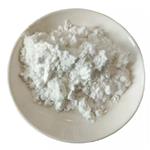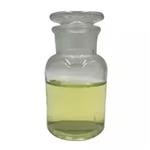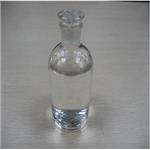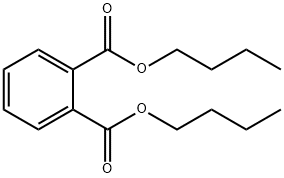- Dibutyl phthalate
-

- $20.00 / 1kg
-
2024-04-22
- CAS:84-74-2
- Min. Order: 1kg
- Purity: 98%
- Supply Ability: 2000kg
- Dibutyl phthalate
-

- $55.00/ kg
-
2024-03-11
- CAS:84-74-2
- Min. Order: 500kg
- Purity: 99.9
- Supply Ability: 200tons
- Dibutyl phthalate
-

- $6.00 / 1kg
-
2024-01-08
- CAS:84-74-2
- Min. Order: 1kg
- Purity: 99.96%
- Supply Ability: 500ton
|
| | Dibutyl phthalate Basic information |
| Product Name: | Dibutyl phthalate | | Synonyms: | PHTHALIC ACID DI-N-BUTYL ESTER;O-BENZENEDICARBOXYLIC ACID DIBUTYL ESTER;Benzene-1,2-dicarboxylic acid di-n-butylester;DIBUTYL PHTHALATE, 99+%;DI-N-BUTYL PHTHALATE, 5000MG, NEAT;DI-N-BUTYLPHTHALATE, 1GM, NEAT;DI-N-BUTYL PHTHALATE, 1X1ML, MEOH, 5000U G/ML;DibutylPhthalate,Certified | | CAS: | 84-74-2 | | MF: | C16H22O4 | | MW: | 278.34 | | EINECS: | 201-557-4 | | Product Categories: | DBP, paint;DBP, PAINTS;plasticizer, DBP;solvent;Aromatics;Isotope Labeled Compounds;Miscellaneous Reagents;Analytical Chemistry;Environmental Endocrine Disruptors;Functional Materials;Phthalates (Environmental Endocrine Disruptors);Phthalates (Plasticizer);Plasticizer;DIA - DICCosmetics;Plasticizers (phthalates);Allergens;Alpha Sort;D;DAlphabetic;Oeko-Tex Standard 100;PhthalatesMethod Specific;Volatiles/ Semivolatiles;Phthalates;Piperazine derivates;Aloe Vera;Building Blocks;C12 to C63;Carbonyl Compounds;Chemical Synthesis;Esters;Nutrition Research;Organic Building Blocks;Phytochemicals by Plant (Food/Spice/Herb);Aromatics, Metabolites & Impurities;Isotope Labelled Compounds;Metabolites & Impurities;84-74-2 | | Mol File: | 84-74-2.mol |  |
| | Dibutyl phthalate Chemical Properties |
| Melting point | -35 °C (lit.) | | Boiling point | 340 °C (lit.) | | density | 1.043 g/mL at 25 °C (lit.) | | vapor density | 9.6 (vs air) | | vapor pressure | 1 mm Hg ( 147 °C) | | refractive index | n20/D 1.492(lit.) | | Fp | 340 °F | | storage temp. | 2-8°C | | solubility | Very soluble in alcohol, ether, acetone, benzene | | form | Liquid | | Specific Gravity | 1.049 (20/20℃) | | color | APHA: ≤10 | | Relative polarity | 0.272 | | Odor | odorless | | explosive limit | 0.47%, 236°F | | Water Solubility | Slightly soluble. 0.0013 g/100 mL | | FreezingPoint | -35℃ | | Merck | 14,3035 | | BRN | 1914064 | | Henry's Law Constant | 6.3 x 10-5 atm?m3/mol (quoted, Petrasek et al., 1983) | | Exposure limits | NIOSH REL: TWA 5 mg/m3, IDLH 4,000 mg/m3; OSHA PEL: TWA
5 mg/m3; ACGIH TLV: TWA 5 mg/m3. | | Dielectric constant | 6.0(45℃) | | InChIKey | DOIRQSBPFJWKBE-UHFFFAOYSA-N | | LogP | 4.46-4.57 at 20-30℃ | | CAS DataBase Reference | 84-74-2(CAS DataBase Reference) | | NIST Chemistry Reference | Dibutyl phthalate(84-74-2) | | EPA Substance Registry System | Dibutyl phthalate (84-74-2) |
| | Dibutyl phthalate Usage And Synthesis |
| Description | Dibutyl phthalate is included as an insect repellent in
some aerosol sprays used to treat flystrike in sheep. It is colorless oily liquid with a very weak aromatic odor. | | Chemical Properties | Dibutyl phthalate occurs as an odorless, oily, colorless, or very slightly yellow-colored, viscous liquid. | | Physical properties | Colorless to pale yellow, oily, viscous liquid with a mild, aromatic odor | | Uses | Di-n-butyl phthalate has been used as an insect repellant. | | Uses | Plasticizer; solvent for oil-soluble dyes, insecticides and other organics; antifoam agent; textile fiber lubricant; manometer fluid; fragrance fixative; insect repellent. | | Uses | Dibutyl phthalate is used in plasticizers, cosmetics, safety glass, insecticides, printing inks, paper coatings, adhesives, elastomers and explosives; solvent in
polysulfide dental impression materials; solvent for perfume oils; perfume fixative; textile lubricating agent; solid rocket propellent; emollient in aerosol antiperspirants; insect repeller; plasticizer in various plastic materials. | | Uses | A phthalate metabolite with genotoxic effect. | | Definition | ChEBI: A phthalate ester that is the diester obtained by the formal condensation of the carboxy groups of phthalic acid with two molecules of butan-1-ol. | | Production Methods | Dibutyl phthalate is produced from n-butanol and phthalic anhydride in an ester formation reaction. | | General Description | Dibutyl phthalate is a colorless oily liquid. Dibutyl phthalate is insoluble in water. The primary hazard is the threat to the environment. Immediate steps should be taken to limit its spread to the environment. Since Dibutyl phthalate is a liquid Dibutyl phthalate can easily penetrate the soil and contaminate groundwater and nearby streams. Dibutyl phthalate is combustible though Dibutyl phthalate may take some effort to ignite. Dibutyl phthalate is used in paints and plastics and as a reaction media for chemical reactions. | | Air & Water Reactions | Insoluble in water. | | Reactivity Profile | Dibutyl phthalate is an ester. Esters react with acids to liberate heat along with alcohols and acids. Strong oxidizing acids may cause a vigorous reaction that is sufficiently exothermic to ignite the reaction products. Heat is also generated by the interaction of esters with caustic solutions. Flammable hydrogen is generated by mixing esters with alkali metals and hydrides. Avoid contact with strong oxidizing agents and strong bases. Will not polymerize. [USCG, 1999]. Can generate electrostatic charges. [Handling Chemicals Safely 1980. p. 250]. | | Health Hazard | The toxicity of this compound is very low. Inhumans, oral intake of dibutyl phthalate at adose level of 150 mg/kg may cause nausea,vomiting, dizziness, hallucination, distortedvision, lacrimation, and conjunctivitis withprompt recovery. It metabolizes to monobutylester and phthalic acid and is excreted in urine.The inhalation toxicity should be insignificantbecause of its negligible low vapor pressure[<0.1 torr at 20°C (68°F)]. However, expo sure to its mist or aerosol can cause irritationof eyes and mucous membranes
LD50 value, oral (mice): 5300 mg/kg. | | Fire Hazard | Combustible. | | Flammability and Explosibility | Non flammable | | Pharmaceutical Applications | Dibutyl phthalate is used in pharmaceutical formulations as a plasticizer in film-coatings. It has been evaluated as a pore-forming agent in novel delivery systems.It is also used extensively as a solvent, particularly in cosmetic formulations such as antiperspirants, hair shampoos, and hair sprays. In addition to a number of industrial applications, dibutyl phthalate is used as an insect repellent, although it is not as effective as dimethyl phthalate. | | Contact allergens | It is mainly used as a nonreactive epoxy diluent. | | Safety Profile | Moderately toxic by
intraperitoneal and intravenous routes.
Mildly toxic by ingestion. Human systemic
eye effects by ingestion, hallucinations,
dstorted perceptions, nausea or vomiting,
and kidney, ureter, or bladder changes.
Experimental teratogenic and reproductive
effects. Mutation data reported.
Combustible when exposed to heat or
flame; can react with oxidizing materials.
Violent reaction with Cl2. Incompatible with
chlorine. To fight fire, use CO2, dry
chemical. When heated to decomposition it
emits acrid smoke and fumes. See also
ESTERS, PHTHALIC ACID, and n
BUTYL ALCOHOL. | | Safety | Dibutyl phthalate is generally regarded as a relatively nontoxic material, although it has occasionally been reported to cause hypersensitivity reactions. It is widely used in topical cosmetic and some oral pharmaceutical formulations.
LD50 (mouse, IV): 0.72g/kg
LD50 (mouse, oral): 5.3g/kg
LD50 (rat, oral): 8.0g/kg
LD50 (rat, IP): 3.05mL/kg | | Potential Exposure | AgriculturalChemical; Tumorigen, Mutagen; Reproductive Effector;Human Data. Used in making vinyl compounds, inplasticizing vinyl acetate emulsion systems, and in plasticizing cellulose esters. Also used as a lacquer solvent (nail polish remover) and insect repellent. | | First aid | If this chemical gets into the eyes, remove any contact lenses at once and irrigate immediately for at least 15 min,occasionally lifting upper and lower lids. Seek medical attention immediately. If this chemical contacts the skin, removecontaminated clothing and wash immediately with soap andwater. Seek medical attention immediately. If this chemicalhas been inhaled, remove from exposure, begin rescue breathing (using universal precautions, including resuscitation mask)if breathing has stopped and CPR if heart action has stopped.Transfer promptly to a medical facility. When this chemicalhas been swallowed, get medical attention. Give large quantities of water and induce vomiting. Do not make an unconscious person vomit. | | Source | Detected in distilled water-soluble fractions of new and used motor oil at concentrations
of 38 to 43 and 15 to 23 μg/L, respectively (Chen et al., 1994). Leaching from flexible plastics in
contact with water. Laboratory contaminant. | | Environmental Fate | Biological. Under aerobic conditions using a freshwater hydrosol, mono-n-butyl phthalate
and phthalic acid were produced. Under anaerobic conditions, phthalic acid was not
present (Verschueren, 1983). In anaerobic sludge, di-n-butyl phthalate degraded as follows:
monobutyl phthalate to phthalic acid to protocatechuic acid followed by ring cleavage and
mineralization (Shelton et al., 1984). Engelhardt et al. (1975) reported that a variety of
microorganisms were capable of degrading of di-n-butyl phthalate and suggested the
following degradation scheme: di-n-butyl phthalate to mono-n-butyl phthalate to phthalic
acid to 3,4-dihydroxybenzoic acid and other unidentified products. Di-n-butyl phthalate
was degraded to benzoic acid by tomato cell suspension cultures (Lycopericon lycopersicum)
(Pogány et al., 1990).
In a static-culture-flask screening test, di-n-butyl phthalate showed significant biodegradation
with rapid adaptation. The ester (5 and 10 mg/L) was statically incubated in the
dark at 25°C with yeast extract and settled domestic wastewater inoculum. After 7 days,
100% biodegradation was achieved (Tabak et al., 1981).
Soil. Under aerobic conditions using a fresh-water hydrosol, mono-n-butyl phthalate
and phthalic acid were produced. Under anaerobic conditions, however, phthalic acid was
not formed (Verschueren, 1983).
Photolytic. An aqueous solution containing titanium dioxide and subjected to UV
radiation (l >290 nm) produced hydroxyphthalates and dihydroxyphthalates as intermediates
(Hustert and Moza, 1988).
Chemical/Physical. Pyrolysis of di-n-butyl phthalate in the presence of polyvinyl
chloride at 600°C gave the following compounds: indene, methylindene, naphthalene, 1-
methylnaphthalene, 2-methylnaphthalene, biphenyl, dimethylnaphthalene, acenaphthene,
fluorene, methylacenaphthene, methylfluorene and six unidentified compounds (Bove and
Dalven, 1984).
Under alkaline conditions, di-n-butyl phthalate will initially hydrolyze to n-butyl
hydrogen phthalate and n-butanol. The monoester will undergo further hydrolysis forming
o-phthalic acid and n-butanol (Kollig, 1993). | | storage | Dibutyl phthalate should be stored in a well-closed container in a cool, dry, location. Containers may be hazardous when empty since they can contain product residues such as vapors and liquids. | | Shipping | Based on regulations, it may be classified asan Environmentally hazardous substances, liquid, n.o.s. Itfalls in Hazard Class 9 and Packing Group III.[20,21] | | Purification Methods | Wash DBP with H2O (to free it from alcohol), then dilute NaOH (to remove any butyl hydrogen phthalate or acid), aqueous NaHCO3 (charcoal), then distilled water. Dry it (CaCl2), distil it at 10torr or less, and store it in a desiccator over P2O5. [Beilstein 9 II 586, 9 III 4102, 9 IV 3175.] | | Toxicity evaluation | Acute oral LD50 for rats: >6,000 mg/kg | | Incompatibilities | Dibutyl phthalate reacts violently with chlorine. It also reacts with oxidizing agents, acids, bases, and nitrates. | | Regulatory Status | Included in the FDA Inactive Ingredients Database (oral capsules, delayed action, enteric coated, and controlled release tablets). Included in nonparenteral medicines licensed in the UK (oral capsules, tablets, granules; topical creams and solutions). |
| | Dibutyl phthalate Preparation Products And Raw materials |
|